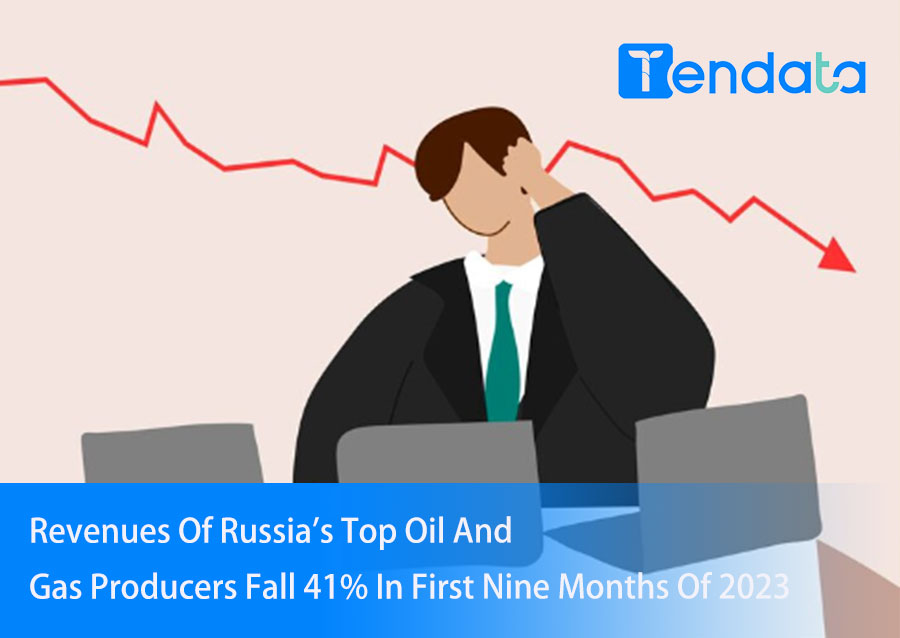 Trade Trends News
Trade Trends News
 01-12-2023
01-12-2023
· Russian oil and gas companies' sales down 41% in first nine months
· Ural oil prices down 26% in January-September
· Transneft oil exports down 8% in the same period
· Russia's oil supplies diversify from Europe to Asia

Revenues of Russia's largest oil and gas producers fell 41% in the first nine months of the year due to lower export volumes and prices, the Central Bank of Russia said in a financial stability review.
Prices for Russia's flagship Urals oil grade fell by an average of 26 percent over the period, while exports through the network of oil pipeline monopoly Transneft fell by 8 percent compared with the first nine months of last year, the bank said.
The bank did not provide raw data on which the percentage change was based.
Russia's economy has faced serious headwinds from Western sanctions over the conflict in Ukraine, but it has coped with the pressure better than Moscow or the West initially expected. Russia's finance ministry now expects a budget deficit of about 1% of gross domestic product (GDP) this year, down from 2% previously.
Last year, the United States, other Group of Seven (G7) countries and Australia imposed a $60-a-barrel price cap on Russian oil. Russian oil producers have had to shift supplies from traditional European markets to China and India, making payment settlements challenging.
Trade activity with India, currently Russia's biggest buyer of seaborne oil, almost collapsed in July because India wanted to pay in rupees, which the Russian central bank told exporters it would not accept, sources told Reuters.
As an interim solution, cargoes were paid in a combination of yuan, Hong Kong dollars and UAE dirhams, the sources said.
On Wednesday, Igor Sechin, president of Russian energy giant Rosneft (ROSN.MM), criticized the central bank for failing to set up a cross-border payment mechanism.
In a review on Thursday, the bank said the yuan's share of all Russian export payments rose to 35 percent in September from 13 percent in January, while the ruble's share remained "significant" at 39 percent in September.
Changes in destinations, trade flows and settlement systems meant that it took longer to receive payments for crude oil and oil products, the bank said.
Foreign currency liquidity in the domestic foreign exchange market surged in August, with the ruble falling below 100 against the dollar, but the market was generally light in the third quarter and liquidity declined, the report said.
The Import Export Database is of great assistance in customer acquisition: its software typically allows for precise targeting of specific regions, selection of industry keywords, and bulk acquisition of customer contact information. Because nowadays, not all precise global buyers attend exhibitions, use B2B platforms, or even have their own websites, making it difficult for search engines to find them. To find them and establish contact for securing orders, we need to use methods that can accurately develop customers. Therefore, when purchasing Import Export Database software, it's crucial to understand how this particular Import Export Database develops overseas clients and to choose an Import Export Database that can accurately pinpoint product requirements and acquire customer contact information in bulk.

The Tendata iTrader Import Export Database yields good results. Tendata iTrader is an online marketing tool that enables the search for premium import and export companies in 200 countries worldwide, with precise and reliable data. Its functionalities include: precise global import and export company searches, locating decision-makers' contact information, in-depth data exploration, checking customs trade alerts, and conducting mass email campaigns.
>>Click for Free Trial Consultation<<
Category
Leave Message for Demo Request or Questions


 T-info
T-info T-discovery
T-discovery

 My
Tendata
My
Tendata Market Analysis
Market Analysis Customer
Development
Customer
Development Competitor
Monitoring
Competitor
Monitoring Customer Relationship
Customer Relationship





































































































































